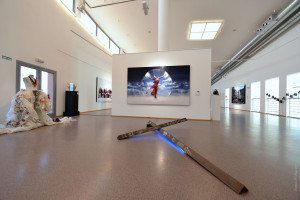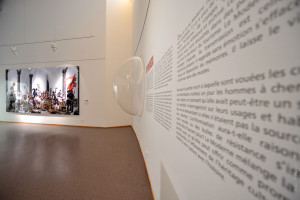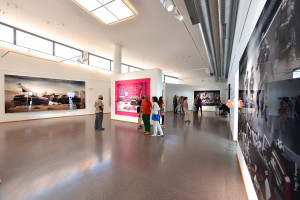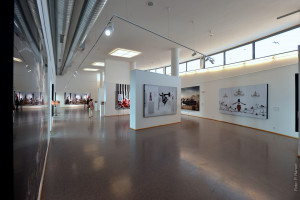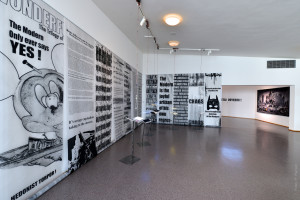
The radical worldview of the French photographer Gérard Rancinan (1953) is regarded as an original expression of contemporary art. His works have acquired an international reputation and are displayed in the most prestigious international galleries and museums and feature in leading public and private collections of contemporary art. The importance of Gérard Rancinan is highlighted by presenting him with the highest French award, the Chevalier des Arts et des Lettres.
The Danubiana welcomed the idea of organising the exhibition of this excellent French photographer as a major and exceptional contribution to the Month of Photography, held annually in Bratislava. Simultaneously, this event was connected with the Danubiana’s long-term objective to present outstanding figures of modern and contemporary European art. The exhibition conception was conceived as “The Trilogy of the Moderns, a Revolution in Three Acts”, enacting the changes of the world, society and life. The artist records in a trilogy – Metamorphoses, Hypotheses, A Wonderful World – the humanity’s “mad progress” in its disruptive and self-destructive form.
Gérard Rancinan (Talence, 1953) started his career as a photographer for the Sygma press agency. He had ample opportunities to travel the globe and gain a lot of experience as a photojournalist, covering events of historic importance, of changes in civil and ethnic wars or natural catastrophes. Rancinan has received four World Press Photo awards.
At the same time he expressed a lively interest in the reality of our contemporary world. The character of his work negated and blurred the boundary between photojournalism and art photography. He was simultaneously inspired by film, theatre and visual art, fashion, show business, celebrities and also covered sport.
Current events covering all aspects of society have been the primary source of his knowledge and experience. Although his works present new information and evidence, he also assigns a new meaning, importance and context to them. Many of his photographs are shocking because he does not shun kitsch as one of his artistic devices; he blends styles, arranges heterogeneous elements with multiple meanings, and his work acquires the funfair and vaudevillian touch.
The series of interpretations-transformations of fine arts – Leonardo’s The Last Supper, Géricault’s The Raft of the Medusa, Velázquez’s Las Meninas and others seem to be particularly provocative. They are conceived as packed figural scenes, spectacular and elaborate in detail. The portraits of artists are transposed in a rather romantic-symbolic spirit – Robert Rauschenberg, Hermann Nitsch, Damian Hirst, Roman Opalka, Monserrat Caballé, David Lynch.
As a witness of his time, he reflects the social aspects, disillusionment and transformation of ethical and aesthetic values in a series of portraits (Adriana Karembeu, Fidel Castro). Many of his portraits of artists, politicians and sportsmen have become iconic.
Finally, it should be noted that the texts by the journalist and writer Caroline Gaudriault were an excellent accompaniment to Rancinan’s photographs. She eloquently expressed the themes and addressed the questions rendered in the photographs as metaphors. Their coded messages were interpreted in Gaudriault’s texts, guiding the viewers towards the understanding of the images.






